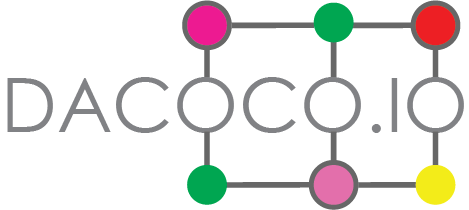Alien Worlds: A Pandora’s Box of Blockchain Innovation
Since launching in 2020 as a community-governed, play-to-earn metaverse, Alien Worlds has evolved beyond its original scope. Today, it’s nothing less than a Pandora’s box of on-chain endeavors, a sprawling sci-fi platform encompassing everything from browser-based gaming, collecting, and building to governing, trading, and staking.
Instead of being tethered to the fortunes of the wider crypto market like many of its competitors, Alien Worlds has blazed its own trail and carved out a very distinctive niche. Which is why it’s well placed to dominate the metaverse category moving forward.
From Play-to-Earn to Play-to-Everything
At its core, Alien Worlds is an expansive web3 platform where Explorers can pursue their own ends or collaborate with others to achieve a common goal. A native token, Trilium (TLM), is the heartbeat of the ecosystem, incentivizing players to engage in mining, trading, staking, and governance. TLM is more than just a token, though – it’s deeply interwoven into the game’s lore as an “innately formless energy source possessing a chaotic resonance that causes radical mutation upon contact with organic matter.”
Discovered by the Altans, one of Alien Worlds’ core races, Trilium’s peculiar properties can be harnessed through the use of Triactor Technology, equipping Altans, Elgems, and others with the ability to survive hostile planets and extend their lifespan. As the Federation – the vast, pan-galactic entity run by Megacorps and Syndicates – grows, its appetite for Trilium drives competition across the six Frontier Planets.
In other words, Trilium is not a garden-variety digital token: it’s sought both in the real world and in Alien Worlds’ fictional metaverse.
Interestingly, every item in the game (land, avatars, tools, etc) is tokenized, with NFTs falling into different rarity tiers. While this fact has led some to refer to Alien Worlds as an on-chain trading card game, the designation is clearly insufficient given what it offers beyond collecting and trading.
To date, Alien Worlds has recorded over $430 million in lifetime transaction value, with both Trilium and NFTs ensuring a strong in-game economy throughout its five-year lifespan. Its sci-fi depth, meanwhile, sets the project apart from its main rivals.
Planetary Exploration
It is true that many of the 447,000 monthly unique active wallets (UAWs) engage with Alien Worlds simply to mine Trilium from one of six planets (Naron, Neri, Eyeke, Kavian, Magor, Veles). The goal of this miner cohort is to accumulate Trilium, which can in turn be used to assemble NFT mining ‘rigs’ capable of procuring higher quantities of TLM. Land barons, meanwhile, lease NFT real-estate upon which others can mine.
Some players refrain from mining entirely, though, focusing instead on playing different Alien Worlds games (Battlefleet Armageddon, Milky War Miner, Mercenary Battlegrounds, and others) and competing for prizes in sponsored tournaments – particularly since prizes often have collectible appeal. Then there are stakers, who are more concerned with locking TLM into planets to gain vote power, which lets them participate in weekly Syndicate elections.
This form of decentralized governance is one of Alien Worlds’ unique selling points. Every week, planets elect five Custodians to represent their community’s interests, and with control over a TLM treasury, they regularly fund projects like games, tools, tournaments, YouTube tutorials, and NFT drops. Over 4,600 proposals have been made already, with 164 funded projects bootstrapped to the tune of almost $750,000. Proof that players aren’t just playing, they’re building.
Beyond the Planetary Syndicates, new DAOs have recently come to the fore including six Union DAOs tasked with considering long-term projects and a dedicated Lore DAO that vets creative submissions.
Through these various decentralized autonomous organizations, players are empowered to continually expand Alien Worlds’ footprint. Community governance has been a key driver of the game’s growth since the beginning.
One way of expanding this footprint is by shaping Alien Worlds’ sci-fi narrative through token voting or creative contributions. The first port of call for those keen to explore this endeavor is to read the official Tokenized Lore book, written by the acclaimed co-author of the Dune prequels, Kevin J. Anderson. Explorers can get up to speed with the foundation lore then append their own stories for voting or seek funding for bigger projects (novels, comics, games) from Galactic Hubs, Alien Worlds’ dedicated grant program.
Case in point: a 45-page comic, Starblind, and its upcoming first-person shooter game Siege Worlds. With the latter, players engage in high-intensity battles while leveraging power-ups and bonuses unlocked through Alien Worlds NFTs.
Conclusion
Whatever way you look at it, Alien Worlds shines as the ultimate metaverse, offering a raft of free-to-play games, a thriving developer ecosystem, and player-driven governance and lore. It’s a platform anyone can jump into and start enjoying, whether their area of interest is gaming, trading, writing, building, staking, or something else.
If you want to see how far web3 gaming has already come, this is where the action is.
